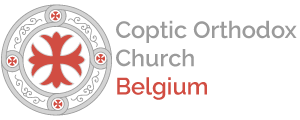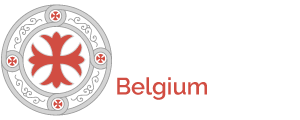
Order of Service
- Offertory: Offering of the bread (Lamb)
- The Prayer of Thanksgiving
- Absolution
- The Intercessions: St. Mary, the Archangels, the Apostles, St. Mark, St. Menas, St. George, Saint of the day, the Pope and bishops.
- Readings: 3 Passages from Pauline Epistles, Catholic Epistles, and Acts
- Synexarium: The Saints of the day
- The Trisagion
- The Holy Gospel with an introductory prayer and Psalm reading.
- Supplications for the Church, the fathers, the congregations, the president, government, and offcials.
- The creed (Nicene creed of St. Athanasius, the 20th Coptic Pope)
- The Prayer of reconciliation
- Holy, Holy, Holy
- Crossing the offerings
- Prayer of the Holy Spirit invocation and outpouring.
- Supplications for the Church unity and peace, the fathers, the priests, the Place, the (Nile) water (or the vegetation or the Crops), and the offerings.
- Memory of the congregation of Saints
- Introduction to the sharing of the Holy Communion
- The fraction of the bread
- The profession and declaration of Orthodox faith
- The Holy Communion
- Psalm 150 and appropriate hymns (concurrently with the offering of the Holy Communion).
- Benediction
- The Eulogia
Fasting
Fasting is an important spiritual element of Coptic life. While it is regarded as an important spiritual practice, it is a voluntary spiritual sacrifice and the Church does not insist that people fast. Fasting is excused for those who are unwell.
Fasting requires not eating at all for a period, and then abstaining from meat, fish, dairy products and cooking fats or oil derived from animals.
There are 210 days of fasting each year. Fasts include the Fast of the Nativity (43 days), the Fast of the Apostles (duration varies), the Fast of the Virgin Mary (15 days), the Fast of Nineveh, and the Great Fast (Lent), which lasts 55 days. Many Copts also fast on Wednesdays and Fridays.


Churches
Coptic churches are built facing East so that the congregation faces East in prayer. The sanctuary of the church, where the altar is found, is divided from the nave by an iconostasis – a screen made of icons. Only priests, and deacons assisting at a service, are allowed through the iconostasis.
The nave of a Coptic church is usually in two parts: the chancel or choir, and the nave itself. The chancel is a raised area with seats for deacons, candle stands and reading desks. Part of the nave is usually reserved for men.
Candles are used a great deal in services. Incense is used during worship.

